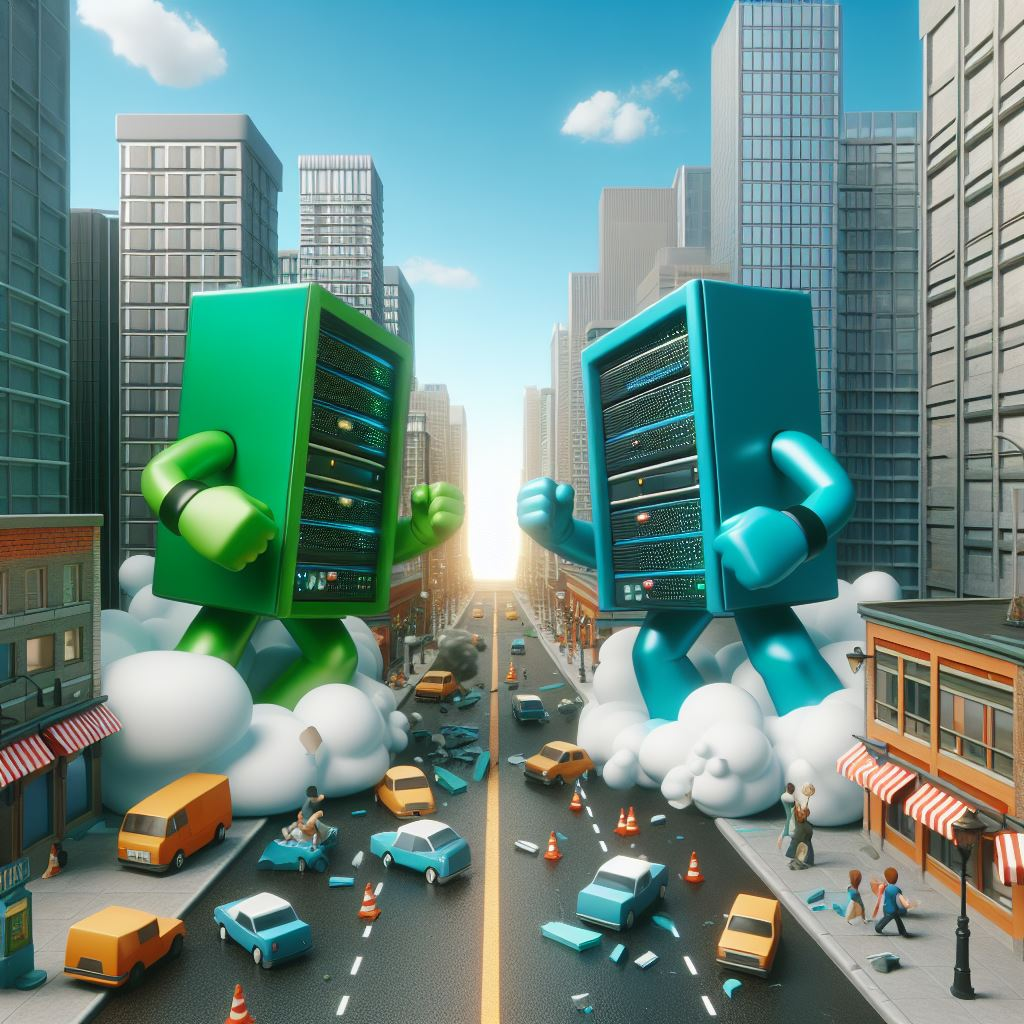For the past ten or so years, the dynamics of the data center have been comparatively stable. The top five to ten data center builders (the Super 7 Hyperscalers + a few) have captured the majority of the Cloud value pool. They consume 50%-60% of enterprise electronics giving them immense buying leverage. Set against them have been a steadily consolidating pool of vendors who have held their own on the margin front, but it has been terrible for start-up entrants left with almost no wiggle room to prise open any piece of the market.
This began to change with Intel’s self-inflected takedown of its own technology roadmap. That shifted the balance a bit in AMD’s favor, and they effectively doubled their share of the market, but it also opened the door to heterogeneous compute. At first, that largely meant roll-your-own chips from the hyperscalers, but has now led to the “AI Boom”.
This raises the critical question as to how this will change Data Center economics. We see four potential scenarios.
- The base case in which Nvidia supplants Intel as the leading vendor in data center silicon, but everything else remains largely the same.
- Fragmentation – Nvidia remains the largest vendor for a while, but over time gives way to a very fractured landscape in which Nvidia competes fiercely against AMD and a rejuvenated Intel, as well as a whole range of homegrown chips and the occasional start-up. This heavily favors the hyperscalers whose capex budgets go down as their vendors get mired in price competition.
- Jensen’s World – Nvidia becomes the dominant vendor not only for data center semiconductors but data center design and architecture. The broad enterprise users start to heavily adopt Nvidia’s software like NIMs and Omniverse. This forces the hyperscalers to follow suit to keep their customers happy. Economics shift heavily in Nvidia’s favor and the hyperscalers all scramble to find alternatives while remaining dependent on Nvidia whose software ambitions continue to grow.
- Science Fiction – AI moves beyond generative tools and thousands of ‘under the hood improvements‘. AI agents become viable and whole new frontiers of digital usage that once seemed a fantasy become real, possibly even Artificial General Intelligence (AGI). Under this scenario, we throw out the old playbook entirely and completely rewrite the value stack – Nvidia probably does well here, but anything could happen as new software giants emerge and rewrite the economics of the industry with their own chips or some new data center architecture.
At this stage, all of these are possible, although if we had to guess we would say we end up somewhere between the first two scenarios. Nvidia looks to be in a really good position right now, but they have their vulnerabilities, and more importantly, the whole landscape is moving too quickly to know anything for certain. And to be clear, by landscape we really mean software. The pace of development on this front is the most exciting thing we have seen in some time, and our sense is that it can still advance a lot more in the next few years.
Through all of this an important factor to consider is just how broad Huang’s vision is. His keynotes and other talks all speak about big vision topics like Sovereign AI, AI factories, drug design and hyper accurate weather forecasts. We do not buy into most of this, as we noted earlier this week, Nvidia’s and Huang’s superpower is to make a lot of big bets, many of which never materialize. That being said, we should not rush to discount all of it. Buried beneath the big words of keynote speeches are some important insights. For instance, the idea of an “AI Factory” or unaligned cloud service provider, operating independently of the hyperscalers is something that could emerge from the current fray. Our point here is to recognize that, as always, the technology business is constantly prone to rapid, radical change. The status quo of the past ten+ years is very likely to shift in some important ways soon.




Leave a Reply